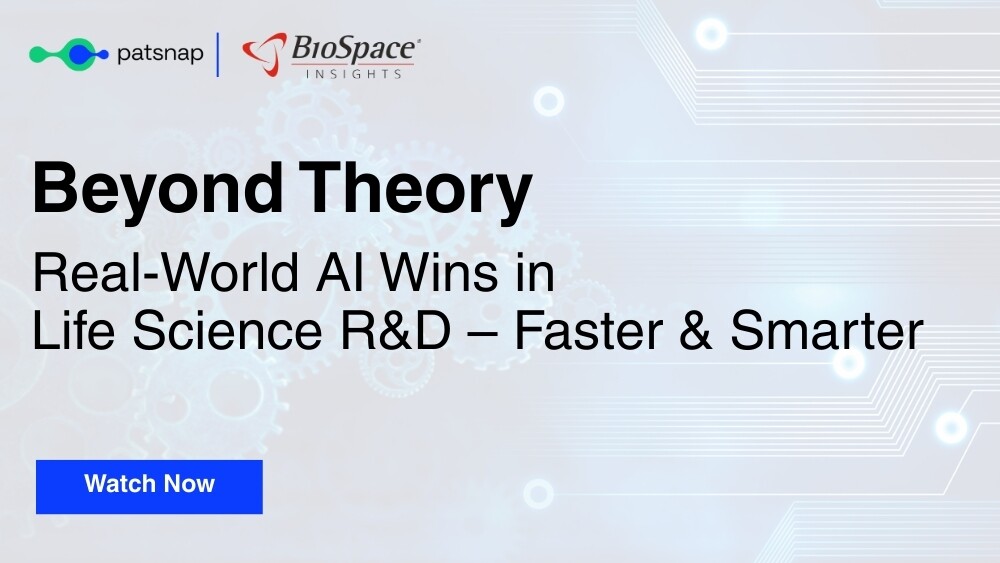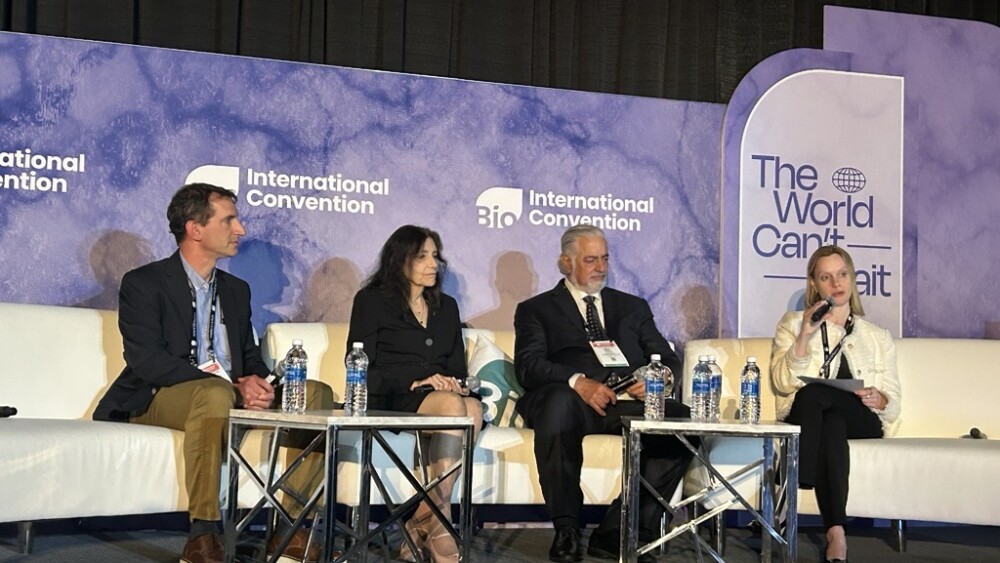2. The symposium, jointly hosted by A*STAR’s Institute of Medical Biology and the British High Commission,will be held from 3-5 Dec, with a scientific programme organised by Dr Andrew South (University of Dundee, UK) and Professor Birgitte Lane (Institute of Medical Biology, Singapore) and features a range of speakers from some of the UK’s top dermatologists (including Professor Irene Leigh CBE, University of Dundee and Professor John McGrath, St Johns Institute, UMDS London) to home-grown local talent (Dr Huijia Chen, Dr David Tan, Institute of Medical Biology A*STAR).
3. Eminent scientists and thought leaders from several specialist skin research centres in the UK will be sharing their research and insights with their Singapore counterparts. UK Centres represented include the Centre for Cutaneous Research (London), Dermatology and Genetic Medicine (DGEM, University of Dundee), the Healing Foundation Centre (University of Manchester) and the Centre for Skin Sciences (University of Bradford). More details about the symposium and the full programme can be found at Annex A.
4. “The skin is a very good tissue system for studying human disease as it is very accessible. The same science we do to understand skin disease is of interest to industry and there are many opportunities for collaboration,” said Professor Birgitte Lane, Executive Director of A*STAR’s Institute of Medical Biology (IMB).
5. Professor Lane also heads A*STAR’s Skin Biology Cluster Platform[1] aimed at fostering and expanding local biomedical skin research, and building partnerships with industry to capture the growing opportunities from skin research. More information on the Skin Biology Cluster Platform can be found at Annex B.
6. SaidMr Lim Chuan Poh, Chairman of A*STAR, “Translational skin research is a new strategic research thrust for the Singapore Biomedical Sciences Initiative. This is part of Singapore’s strategy to move beyond pharmbio and broaden the industry clusters that the BMS community work with. This symposium brings together some of the top scientists in the field of skin research and I am confident that the sharing of expertise and knowledge between participants from the UK and Singapore will translate to medical discoveries that will benefit healthcare around the world.”
7. Antony Phillipson, British High Commissioner, said, “This symposium is an excellent opportunity for leading researchers from both countries to exchange views, establish new contacts and renew acquaintances. Through this partnership we will be able to leverage each other’s strengths and be better placed to bring together the best research to tackle health challenges today and in the future.”
8. Professor Lane added, “The UK is a leader in dermatology and skin biology and they have a wealth of experience in industrial partnerships. In Singapore, we have access to different Asian phenotypes which means our research is quite distinctive and complementary to that of the UK. This is also a draw for many companies. We look forward to a strong partnership with the UK to train the skin biologists and dermatologists of the future and to attain global excellence in skin research.”
Background on skin disorders
9. One in three people suffer from skin disorders worldwidewhich cause a decreased quality of life and an increased healthcare burden to society. Skin diseases are one of the most prevalent ailments for which treatment is sought and there is a strong need for a better understanding of skin biology from the healthcare sector, pharma industry as well as a growing personal care market as companies are increasingly looking to skin biology to differentiate their products for the Asian market.
Background on UK-Singapore Partners in Science Initiative
10. The symposium is part of the UK-Singapore Partners in Science Initiative to increase and strengthen links between UK and Singapore scientists[2] and provide a platform for unique networking opportunities for scientists to explore new opportunities for collaboration. It will open the door to exciting new tie-ups and further clinical, academic and industry partnerships between Singapore and UK institutions.
AGENCY FOR SCIENCE, TECHNOLOGY AND RESEARCH (A*STAR)
Enclosed:
Annex A – Programme for Translational Skin Biology Symposium
Annex B – About the Skin Biology Cluster Platform
For media queries and clarifications, please contact:
Ong Siok Ming (Ms)
Senior Officer, Corporate Communications
Agency for Science, Technology and Research
Tel: (+65) 6826 6254
(+65) 9733 7434
Email: ong_siok_ming@a-star.edu.sg
About the Institute of Medical Biology (IMB)
IMB is one of the Biomedical Sciences Institutes of the Agency for Science, Technology and Research (A*STAR). It was formed in 2007, the 7th and youngest of the BMRC Research Institutes, with a mission to study mechanisms of human disease in order to discover new and effective therapeutic strategies for improved quality of life. From 2011, IMB also hosts the inter-research institute Skin Biology Cluster platform.
IMB has 20 research teams of international excellence in stem cells, genetic diseases, cancer and skin and epithelial biology, and works closely with clinical collaborators to target the challenging interface between basic science and clinical medicine. Its growing portfolio of strategic research topics is targeted at translational research on the mechanisms of human diseases, with a cell-to-tissue emphasis that can help identify new therapeutic strategies for disease amelioration, cure and eradication.
For more information about IMB, please visit www.imb.a-star.edu.sg.
About the Agency for Science, Technology and Research (A*STAR)
The Agency for Science, Technology and Research (A*STAR) is the lead agency for fostering world-class scientific research and talent for a vibrant knowledge-based and innovation-driven Singapore. A*STAR oversees 14 biomedical sciences and physical sciences and engineering research institutes, and six consortia & centres, located in Biopolis and Fusionopolis as well as their immediate vicinity.
A*STAR supports Singapore's key economic clusters by providing intellectual, human and industrial capital to its partners in industry. It also supports extramural research in the universities, and with other local and international partners.
For more information about A*STAR, please visit www.a-star.edu.sg.
Annex A
PROGRAMME
DAY 1
MON 3 DECEMBER
0830-0900
Registration
0900-0930
Welcome from the Organisers -
Dr Andrew South, University of Dundee, UK and Prof Birgit Lane, Exec Director, Institute of Medical Biology, Singapore
Symposium Opening by the Guests of Honour -
Mr Chuan Poh Lim, Chairman, A*STAR
HE Mr Antony Phillipson, British High Commissioner
Session I
SKIN CANCER: NEW IDEAS AND DIRECTIONS (Chair: A South)
0930-1000
IRENE LEIGH - College of Medicine Dentistry & Nursing, University of Dundee, UK
Developing treatments for skin cancer
1000-1030
ANDREW SOUTH- College of Medicine Dentistry and Nursing, University of Dundee, UK
Genetics of skin cancer progression
1030-1045
Young Scientist Award Winner
NEIL RAJAN - Inst of Genetic Medicine, University of Newcastle.
Loss of organisation in CYLD defective tumours is associated with diminished DKK2 expression
1045-1115
- BREAK -
1115-1145
ANDREW TAN – Nanyang Technological University, Singapore.
The role of reactive oxygen species in contact-independent growth
1145-1200
AMANDA GOH - p53 Lab, A*STAR
Studying p53 activation and stability in vivo
1200-1215
SARAH ETHERIDGE - Centre for Cutaneous Research, QMUL, London, UK
EGF and Ephrin Signalling is Dysregulated in Tylosis with Oesophageal Cancer
1215-1230
LUKAS LACINA – Institute of Medical Biology & Charles University, Prague
Plasticity of melanoma phenotype: consequences for diagnostic markers
1230-1400
- Lunch –
Session II
GENETIC SKIN DISORDERS: USING RARE TO GET AT COMMON (Chair: B Lane)
1400-1430
BRUNO REVERSADE - Institute of Medical Biology, A*STAR
Can a frog really model a human skin disease?
1430-1500
DAVID KELSELL - Centre for Cutaneous Research, QMUL, London, UK
Disease gene discovery: New insights into skin and GI syndromes
1500-1515
YIZHEN NG - College of Medicine, Dentistry & Nursing, University of Dundee, UK & IMB, A*STAR
Gene expression profiling of primary fibroblasts isolated from multiple self-healing squamous epithelioma (MSSE) 1515-1545
- BREAK -
1545-1615
BOON KEE GOH - Skin Physicians at Mount Elizabeth Medical Centre
Calcium, Keratin and Pigmentation
1615-1645
BIRGIT LANE - Institute of Medical Biology, A*STAR
Pathway intervention as a therapeutic strategy for genetic diseases involving intermediate filaments
1645-1715
IRWIN MCLEAN - Dermatology and Genetic Medicine, University of Dundee, UK
RNA-interference and small molecule therapy development in hereditary disorders of skin and cornea
1715-1745
PANEL DISCUSSION ON SESSIONS I/II:
genetic skin disease therapy
1800 - 2000
POSTER SESSION AND DRINKS
followed by
BUFFET DINNER
Foyer, Matrix Building, L4
DAY 2
TUE 4 DECEMBER
Session III
STEM CELLS AND THEIR APPLICATIONS IN SKIN
(Chair: A Colman)
0900-0930
NICHOLAS BARKER– Institute of Medical Biology, A*STAR
Lgr Proteins as Markers of Skin Stem Cells
0930-1000
DAVID TAN – Institute of Medical Biology, A*STAR
Single cell gene expression profiling reveals functional heterogeneity of human epidermal stem cells
1000-1020
XINHONG LIM - Dept of Developmental Biology, Stanford University & A*STAR
Identification of Wnt-secreting niche cells and Wnt-responding stem cells in epidermal homeostasis, injury and cancer
1020-1050
- BREAK -
1050-1130
JOHN MCGRATH - St John’s Institute of Dermatology, King’s College London
Cell therapies for non-healing skin
1130-1145
NICOLAS GRASSET – Institute of Medical Biology, A*STAR
Tracking epidermal stem cell fate after engraftment
1145-1200
FAHAD KIDWAI – Faculty of Dentistry, National University of Singapore
From human embryonic stem cells to complex epidermal tissue: A curious case of skin
1200-1400
- LUNCH -
DAY 2
TUE 4 DECEMBER
SESSION IV
21st CENTURY WOUND HEALING (Chair: P. Bigliardi)
1400-1430
COLIN SONG - Burn Unit/Dept Plastic, Reconstructive & Aesthetic Surgery, SGH
Wound healing research – A clinical perspective
1430-1500
PAUL BIGLIARDI - Institute of Medical Biology, A*STAR & NUHS/NUS, Singapore
Combating infection as a first step in wound healing
1500-1515
JACKSON LI - Singapore Immunology Network (SIgN), A*STAR
In vivo multiphoton microscopy investigations of the role of neutrophil dynamics in the progression of immune complex-mediated inflammation
1515-1530
MONICA TJIN - School of Materials Science & Engineering, Nanyang Technological University, Singapore
Artificial extracellular matrix for keratinocytes regeneration
1530-1600
- BREAK -
1600-1630
MATTHEW HARDMAN - Healing Foundation Centre, Univ. Manchester, UK
Ageing, hormones and cutaneous healing
1630-1645
Young Scientist Award Winner
ALVIN CHUA - Burn Unit, Dept Plastic, Reconstructive & Aesthetic Surgery, SGH
Wnt signalling in keloid fibroblasts
1645-1715
PRABHA SAMPATH – Institute of Medical Biology, A*STAR
A defective switch impedes healing of chronic wounds
1715-1745
PANEL DISCUSSION ON SESSIONS III/IV:
accelerating healing
1800-2100
CONFERENCE BBQ
Street level, Neuros/Immunos
DAY 3
WED 5 DECEMBER
SESSION V
SKIN DIFFERENTIATION, AGEING AND STRESS
(Chair: Leah Vardy)
0900-0930
VLADIMIR BOTCHKAREV – Centre for Skin Sciences, University of Bradford/Boston University
Topological genome organization and higher-order chromatin remodeling in epidermal keratinocytes during development and differentiation
0930-0945
LI FANG KOH - Institute of Medical Biology, A*STAR
The novel roles of TAp63b in human keratinocytes
0945-1015
OLIVER DREESEN - Institute of Medical Biology, A*STAR
Nuclear lamina remodeling during replicative ageing of human skin
1015-1030
VIVIEN WOO - Institute of Medical Biology, A*STAR
Functional Characterization of Keratin 14 Phosphorylation in the Head Domain
1030-1100
- BREAK -
1100-1130
FOOK TIM CHEW – Dept of Biological Sciences, National University of Singapore
Genetic variations influencing skin barrier functions in the Singapore population
1130-1200
HUIJIA CHEN - Institute of Medical Biology, A*STAR
Filaggrin and atopic dermatitis in Europe vs Singapore
1200-1230
JIANJUN LIU – Genome Institute of Singapore, A*STAR
Genetic Dissection of Psoriasis Susceptibility through Genome-wide Association Study (GWAS)
1230-1400
- LUNCH -
Session VI
HAIR FOLLICLE BIOLOGY – COSMETIC OR MEDICAL?
(Chair: Ralf Paus )
1400-1430
MIKE PHILPOTT – Centre for Cutaneous Research, QMUL, London, UK
Oxidative stress and cell senescence in androgenetic alopecia (AGA) and the development of immortalised cell lines and three-dimensional histiotypic models
1430-1500
AXEL HILLMER – Genome Institute of Singapore, A*STAR
Genetics of male pattern baldness: new risk loci and association with other phenotypes
1500-1530
- BREAK -
1530-1600
RALF PAUS - University of Manchester, UK & University of Lübeck, Germany
Frontiers in epithelial neuroendocrinology: leads and lessons from the human hair follicle
1600-1630
COLIN JAHODA – School of Biological and Biomedical Sciences, University of Durham, UK
Applications of hair follicle dermal cells to skin regeneration and disease
1630-1700
PANEL DISCUSSION ON SESSIONS V/VI:
the appliance of science
1700
POSTER PRIZES
1715
- close of meeting -
Annex B
The Skin Biology Cluster Platform
Lead: Birgit Lane
Project Managers: Delina Swee, John Common
Strategic Alliances Manager: Liz Jazwinska
Core Researchers: Scientists within IMB, IMCB, GIS, SIgN, BII
Collaborative Cluster Additional teams from the above, plus several researchers from IBN, SICS, SBIC, NSC, NUS, NUHS, SGH
The Skin Biology Cluster is a technology platform within the Biomedical Research Council of A*STAR, built on a growing common interest in skin biology research and its applications. Its purpose is to enhance interactions between A*STAR scientists and relevant potential industry research partners. By fostering collaborative research and development in skin biology, the platform promotes interactions between scientists and healthcare professionals and the pharmaceutical and healthcare industries in Singapore.
A concerted and robust research and development effort in skin biology is central to the shaping of practical skin science and medicine in Singapore. New knowledge and understanding leads to new ideas, new practical applications and improved quality of life and wellbeing for Singapore and the region.
The three components of the Skin Biology Cluster are designed to facilitate and accelerate different stages of the translational skin research process:
A. The Skin Resource Centre
Develops biotechnology tools and capabilities for data collection on Asian skin, and optimal test systems for skin biology. The team also functions as an access point for skin research partners to other BMRC capabilities (e.g. full spectrum microscopy, molecular pathology, genomics, high throughput assays).
B. The Skin Discovery Initiative
Promotes a portfolio of research projects specifically targeted at areas posing challenges to industry and medicine. Currently includes research projects on skin barrier function (e.g. genetics and culture models for eczema and related disorders) and skin ageing (including wound healing, DNA damage, pain, inflammation and itch).
C. The Skin Cluster
Facilitates meetings to help interaction of companies and BMRC scientists with the aim of understanding each other’s developing needs, capabilities and interests. Ranges from brainstorming sessions to workshops, symposia and conferences, ranging from the Singapore Skin Club meetings to the UK-Singapore Translational Skin Biology Symposium in December 2012.




